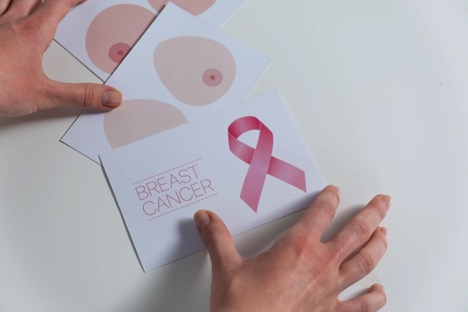
As we age, it is important that we monitor our health and conduct regular checkups to detect and diagnose any abnormalities early on. This is especially true for women who are at a high risk of developing breast cancer. A regular checkup should include a mammogram screening. A mammogram is an x-ray taken of the breast to detect cancerous cells. Malignant tumors could be detected three years prior to being noticed or felt by the patient if they undergo regular mammogram screening.
Regular mammogram screening has saved the lives of 25% of the women who were diagnosed at an early stage of breast cancer. A lot of women do not know how important mammogram screenings are or are not aware of the age at which they should start getting regular checkups. Women who have exceeded the age of 40 should undergo an annual mammogram screening. Read on to understand the importance of mammogram screenings and why all women should undergo them regularly in order to diagnose and treat breast cancer early on.
Are Mammograms Safe?
The procedure of Mammogram screening has been proven safe since the amount of radiation exposure is quite minimal. Getting early, as well as regular, mammogram screenings is much more beneficial than harmful. Women who were diagnosed at an earlier stage are usually saved from breast removal or mastectomy. A lumpectomy, which is recommended for localized and small tumors, is usually the procedure most doctors will undergo. Detecting breast cancer through mammograms screening is the international golden standard. It is approved worldwide for its accuracy, safety, and for being life-saving.
The Importance of Regular Mammogram Screening
As mentioned before, undergoing regular mammogram tests or screenings is essential for women over the age of 40. This procedure should be done regularly, even if you experience no health concerns, or notice no abnormal signs. Mammogram screening is efficient in detecting breast tumors earlier than they are noticed or felt by patients and physicians. The medical experts at https://www.bedfordbreastcenter.com emphasize that women have to be aware of any changes or abnormalities, as well as how their breasts normally look or feel. Any unusual signs should be immediately reported to their doctor or health care provider. Women with a family history of cancer are more likely to develop breast cancer on account of their genetic predisposition. In such cases, doctors might have to set a different plan for mammogram screenings that may include further diagnostic tests.
How to Prepare Yourself for a Mammogram Screening
There are helpful tips for making a mammogram screening more efficient, accurate, as well as less painful. Wearing deodorants, perfume, lotions, and creams near areas of your breast, and underarms results in white spots appearing in the screening of a mammogram, making it inaccurate and can be misread by the radiologist. Avoid a mammogram screening before or during your period, since breasts are usually more tender and sometimes swollen during this time of the month, it will cause more discomfort and pain during the process. Most mammogram screening centers do not require a doctor’s prescription or medical note, so head there immediately after setting an appointment. Don’t stress yourself before getting a mammogram, most women experience a little discomfort, it’s usually not a painful procedure.
How Is a Mammogram Done?
A mammogram is a special x-ray machine, which requires a technician to take care of the whole procedure. The technician will place your breast between two plastic plates, which will flatten the breast by pressing, you might experience some discomfort, which depends on the sensitivity of your breast and the skill of the technologist doing the mammogram. Some pressure is usually felt, and the technician will repeat the steps in order to screen different sides of the breast. It should only take a few minutes, so the discomfort will not last long. A technologist is not the person to give results, results are read by radiologists and then reported to your doctor. Mammograms are essential to be done at recommended time intervals in order to compare previous ones in case any changes occur.
What Steps Should Be Taken if the Mammogram Screening is Abnormal
If the Mammogram screening is abnormal, it doesn’t have to be breast cancer, some benign lumps, which are likely to be cysts, are not life-threatening. This might happen to most women, but having regular checkups and mammograms, in this case, are required. In many cases, benign tumors can cause breast cancer at a later stage. Doctors usually schedule a more frequent mammogram screening and further tests. It helps to discover breast cancer at an earlier stage, instead of exposure to higher risks.
A mammogram screening could be a lifesaver to women in their forties, as it has been proven that regular mammograms detect breast cancer at an early stage, long before it is felt or noticed by patients and doctors. Mammogram screenings are safe and accurate, and the amount of radiation involved in the procedure does not pose any health risks. Prevention is always better than cure, so if you are forty years or older and haven’t scheduled your first mammogram screening yet, make an appointment today and get in the habit of scheduling regular checkups.







